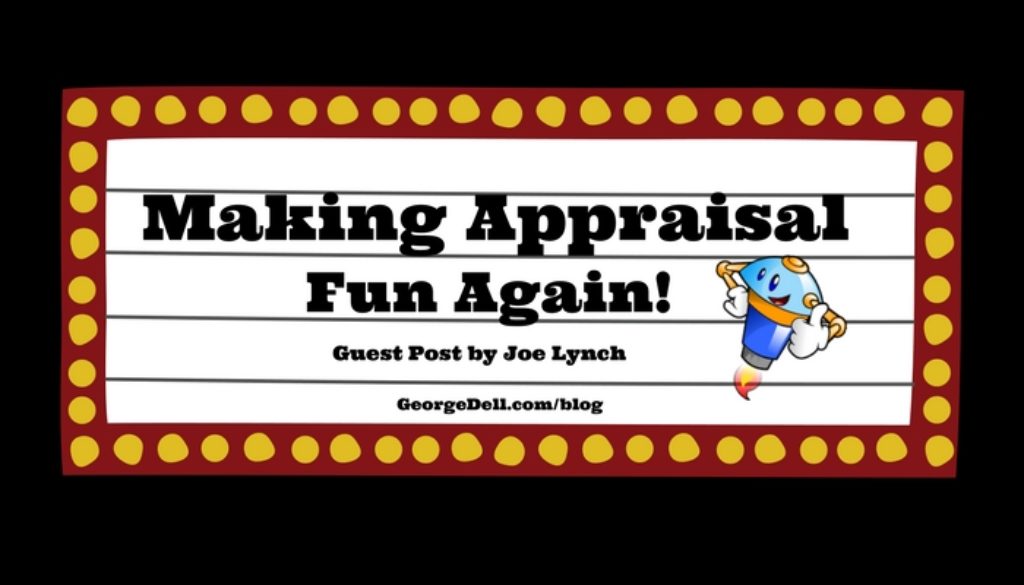We’re pleased to have my friend and long-time student assistant, Joseph Lynch from Sacramento, CA, write this week’s blog. He’s certified in residential appraisal, working in Northern California, and is President of the Sacramento Chapter of the Real Estate Appraisers Association. Check out Joe’s blog here.
Thank you, George, for inviting me to pinch hit this week for your blog. A little more about my background: I graduated in 1990 from UC Davis with a BA in Economics and a Math minor but couldn’t find work. I ended up in the IT department of Valley Record Distributors, a music and video wholesaler. Besides system testing and development, I learned about querying databases on an IBM AS/400 computer system. The best part of my job, besides a lot of free music and meeting cool musicians, was this data analysis.
The company blew up in late 2001 putting me out of work. But my brother-in-law knew an appraiser who wanted to expand his appraisal business. He put the two of us together and I started as an appraiser trainee in mid-2002. I found myself in a “sink or swim” style of training, where the goal was “3 comps and a listing” and move the report along. Fortunately, I had a reasonably good understanding of what a comparable was so my reports were not the worst in the world.
You Don’t Know What You Don’t Know
And I didn’t know what I didn’t know until I started taking classes from instructors like Barry Cleverdon in Roseville, CA.
Barry started an appraisal school and taught classes along with bringing in outside instructors. I remember Steve Smith (on the National Appraiser’s Forum) encouraging us to upgrade our skills and move up the food chain to better work and better clients. Anthony Young spent a day fighting with three different versions of Excel but showed us how graphs could be used when appraising. And then I took Stats and Graphs from George.
The Stats and Graphs class opened my eyes to a better way of doing appraisal. For the first time, I saw how appraising tied into my past experience in data analysis. I started exporting comparable data into Excel and making graphs showing market trends. I experimented with pivot tables and came up with ways of reporting market activity and estimating adjustments using grouped pairs analysis. My reports became better supported, and more reliable. I moved up that food chain to better clients and better assignments.
I spend a lot of time on graphs to understand the housing markets in my area. I no longer guess how much prices change. I know the daily price change and make reliable, indexed time adjustments. My job changed from “pick the best comps and fill out the form”. Now, I analyze the all of the relevant comparable data to estimate an analyzed answer. I’m back to my earlier role as an analyst. Appraisal is fun again.

December 6, 2017 @ 1:25 am
Although I know a lot of work goes into where you have ended up, Joe, you make it sound simple. Congrats on your achievements.
December 6, 2017 @ 6:32 am
Thanks Bill. REAA (and you) have certainly played a part in my career growth.
Joe Lynch
December 6, 2017 @ 8:49 am
Sure wish we had George in the southeast. I’d love to take one of his classes. Great post, Joe.
December 6, 2017 @ 8:55 am
Hi Tom,
Good to hear from you. You need to come to California next time he teaches, make a vacation out of it….
December 7, 2017 @ 12:10 am
Nice post Joe. Building a chart of relevant sales (and listings if needed), then graphing the results in date order and applying trend lines is one of the best ways to ‘see’ what is actually happening. My graphs have a different symbol and color for the report comps so they stand out from the other properties.
Applying both linear and polynomial trend lines (two different colors, with the poly dashed) to the graph REALLY begins to reveal market activity – especially with the poly because it will show when changes occur. By adjusting the ‘sensitivity’ (Order Number) of the poly, an appraiser can really reveal micro movements not seen in the linear trend line. (That’s the problem with regression software that only has a linear line.)
However, the difficulty of using the poly for time (market) adjustments is determining the correct/appropriate Order Number, and then the price movement along the time period. It’s much easier to use the linear line to develop an appropriate time adjustment. I use an Excel custom Historical Price Trends page with this info in every report (back 3 to 5 years) …. which replaces anything the MC form shows (due to extremely limited data in my market) …. and is far more accurate. My MC form says I “don’t rely on it” for any statistical information.
I wouldn’t necessarily call this exercise ‘fun’ but it is a better indicator of actual market activity than the major media sources, etc., report.
December 7, 2017 @ 5:52 am
Dave,
Good to hear from you. Sounds like you have a good solution for your work. I use a similar statement in the 1004MC referencing George’s article about the faults with the 1004MC form (look in the download section of this site for a copy).
Joe Lynch
July 25, 2018 @ 9:29 am
Every once in a while I re read some great writing and thinking as displayed in this post. We all thank George for this vehicle and enlightening us with data analysis, theory, appropriate usage and tying it to the fundamentals of appraisal. Joe has shown us his own evolution as an appraiser who strives to raise the quality of the craft – an admirable achievement. Thank you Joe
July 25, 2018 @ 10:00 am
Blast for the past time! Thanks for the kind words Mark.